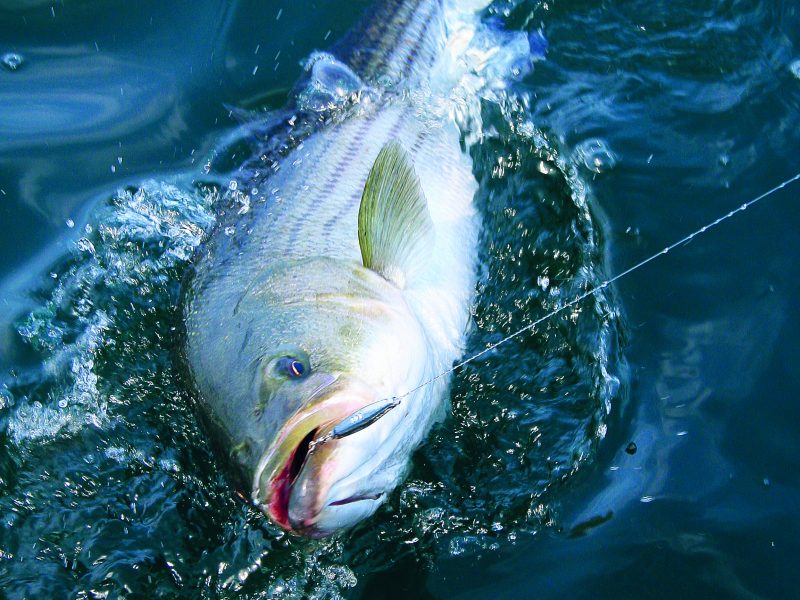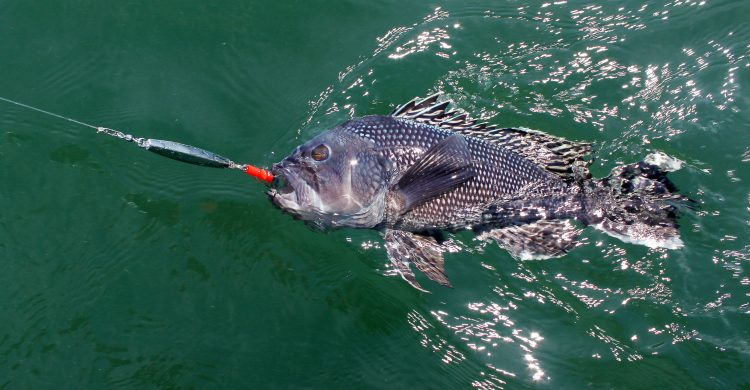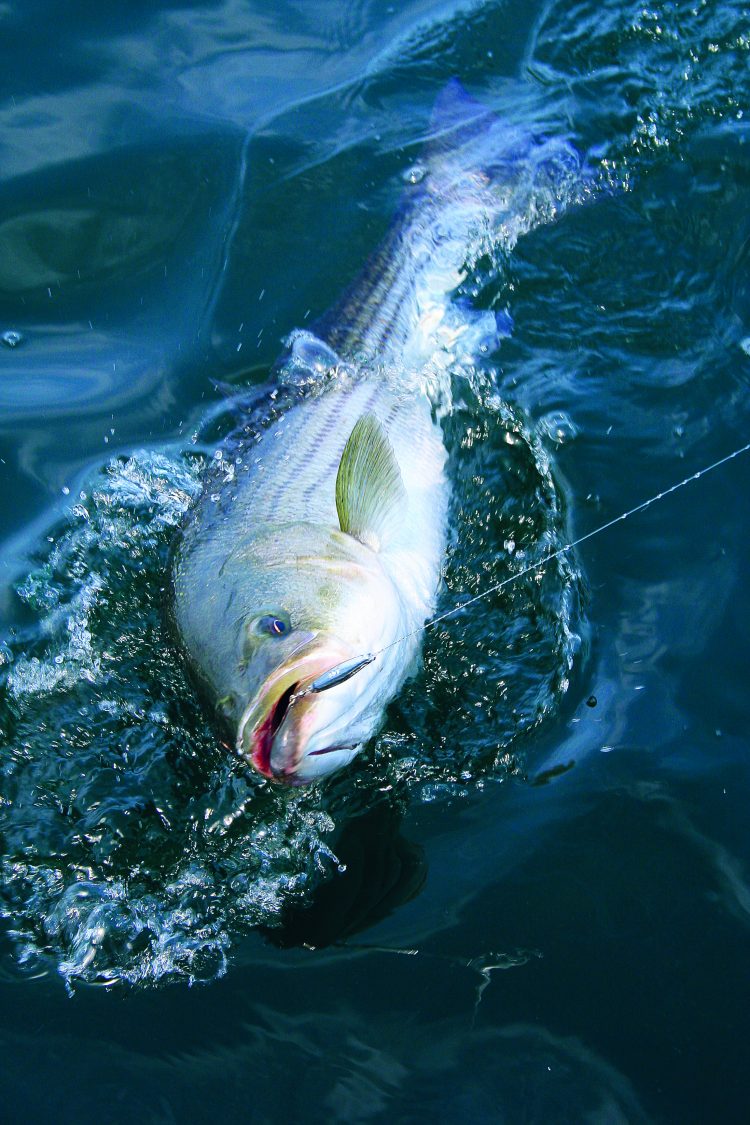The History of Diamond Jigs
“If it ain’t broke, don’t fix it.” - Thomas Bertram Lance

Wader-clad and bundled with a neck gaiter and cheap ski gloves, I clambered over the sand dunes at Jones Beach’s west end with an icy-to-the-touch, 1-ounce diamond jig on my line. With the exception of two other vehicles, the parking lot was empty. A recent report suggested there were still bass—some pushing 30 inches long—feeding on sand eels in the mid-November surf. I didn’t fish diamond jigs often, but if there was ever a time to throw one, it was now. My jig plummeted just beyond the cresting waves and foamy wash over a sandbar about 40 yards out. When it reached the foam, a delicate thud and slack line signaled a bite, and in less than 60 seconds, a receding wave deposited a beautiful late-season striper onto the sand.
(Note: On The Water is reader-supported. When you buy through links on our site, we may earn an affiliate commission.)
The diamond jig has a nearly 100-year history that began in Bridgeport, Connecticut. Fishermen in Long Island Sound quickly took a liking to these heavy metals for their ability to sink quickly and generate a tantalizing shimmer with their highly reflective nickel finish. The center-weighted design created an enticing fluttering action, similar to a leaf falling from a tree or a mortally wounded baitfish sinking through the water column.
By day or night, the fish-catching abilities of the original Bridgeport Diamond Jig were undeniable. The slender profile mimicked a variety of forage from sand eels to silversides, and their durability against the gnashing teeth of bluefish was unmatched. Today, Bridgeport Diamond Jigs are manufactured by Acme Tackle, an industry leader in the category of metal lures, or as surfcasters call them, tins. Years later, AVA Tackle, a company based just across the Sound in central Long Island, released a slimmer version of the diamond jig, one that caught on with the surfcasting community.

Although AVA Tackle is no longer in business, their diamond jigs became the standard for surfcasters and jig fishermen alike. Manufacturers like Sportfish Products and Tsunami Tackle currently produce their own diamond jigs with that same AVA design. When November rolls around, surf anglers scour tackle shops for A07s, A12s, A17s and A27s—weighing 1, 1.5, 2 and 3 ounces, respectively—adorned with green, red, or white tube trailers over the long hook shank to help them stand out in the roiled surf.

The narrow metal soars through onshore winds, and the tube tail, fitted over a Tru-Turn hook, twists and wiggles on the retrieve like a panicked sand eel. There’s considerable debate over the best tube color for an Ava jig, but green seems to be the standard among boat and shore fishermen. However, some surfcasters believe that a black tube, especially on a cloudy day, stands out better and gets more bites.

In the late-fall surf, an Ava is often fished with a RedGill or bucktail teaser 18 to 24 inches above it. When stripers are picky and keying in on close imitations of small, late-season baitfish, the diamond jig acts merely as a long-casting vessel to deliver the teaser.
A slow and steady retrieve, with an occasional flick, is the go-to method for a diamond jig in the surf, but lift-and-drop and dragging retrieves also work. The jig’s pronounced kicking action, which stirs up the sandy bottom like a burrowing sand eel, makes these simple tins especially effective so late in the season.

In the boat, a number of retrieves will catch. Yo-yo jigging a diamond jig just off the bottom, or at the depth where fish have been marked on the fishfinder, is very effective. “Squidding” is another technique that’s as old as the diamond jig itself. With this method, an angler drops the metal jig to the bottom, reels steadily 20 to 50 feet off the bottom, and drops the jig again. It’s most popular when targeting pollock and groundfish in northern New England, but it’s just as effective on bass and blues.
In another hundred years, we’ll all have made our final casts, but diamond jigs, like the eponymous gemstone, will still be around, filling tackle boxes and catching fish.
Leave a Reply